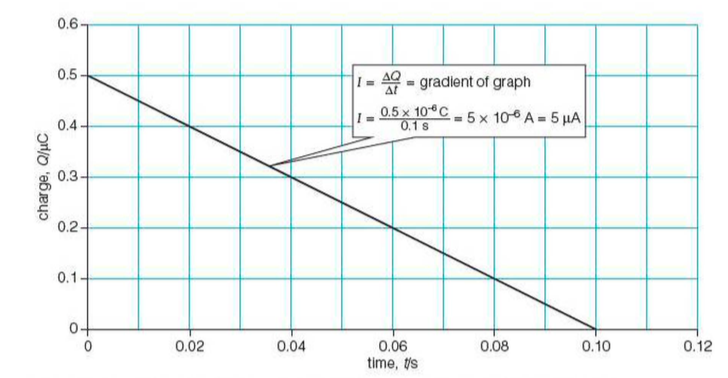Moving Charge and Electric Current
What you should know
⇒ Electric current is a flow of electric charge
⇒ The size of the elctric current, I, is the rate of flow of electric charge, which is given by the equation:

- Where Q is the charge in coloumbs, C, and t is the time in seconds
⇒ Electric current is measured in amperes, A, by an ammeter connected in series with components
⇒ The potential difference or voltage, V, between two points in an electric circuit is the work done (energy transferred), W, per coulomb of charge that passes between the points and is given by the equation:
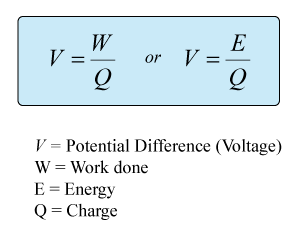
⇒ Potential difference is measured in vols, V, by a voltmeter connected in parallel with components
⇒ The resistance of a component, R, can be found by measuring the current, I, through and potential difference, V, across the component; resistance is defined by the equation:
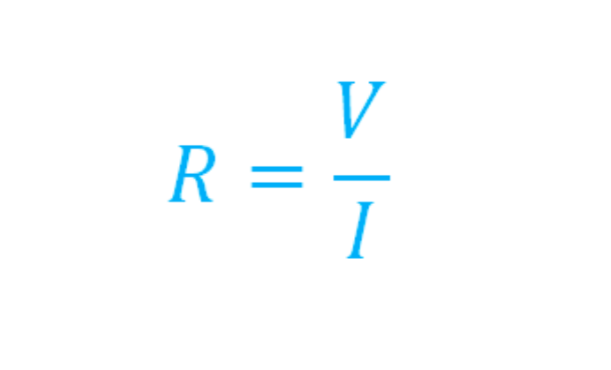
⇒ Resistance is measured in Ohms, Ω
⇒ The current flowing through, the potenial difference across and the resistance of a component are related by the equation: V = I x R
- For example, if the current in the circuit below is 4.5 A and the resistance is 4.0Ω, the potential difference across the resistor is 18V
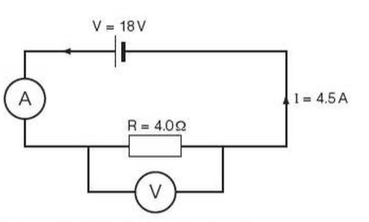
⇒ The potential difference provided by cells connected in series is the sum of the potential difference of each cell (depending on the direction in which they are connected)
Summary
⇒ A lightning bolt is an extreme example of an electric current
- During the largest cloud-to-ground lightning bolts 2 x 1021 electrons might jump from the bottom of a cloud to Earth in 0.003s, delivering 5000MJ of electrical energy
⇒ AN electric current is formed when the electrons move. Electric current, I, is the rate of flow of charge:

⇒ The SI unit of current is the ampere (symbol, A), which is nearly always abreviated to amps
- 1 amp is equivale to a charge of 1 coulomb of charge flowing in 1 second (so 1A A = 1 Cs-1)
⇒ Note here the use of ▵Q and ▵t, rather than Q and t
- This is because current can be changing changing
Example

Electric Circuits
⇒ Electronic circuits, such as those that control household appliances, operate with much smaller currents (typically milliamps (mA, 10-3 A), and many microelectronic circuits, such as the printed circuit boards inside many computer devices, operate with currents of the order of microamps (μA, 10-6 A)
⇒ Even currents of the order of microamps still involve the movement of about 6 x 1012 electrons per second)

Electrolyte
⇒ Not all electric currents involve the flow of electrons
⇒ Charged ions in solution (called an electrolyte) can also flow and create a current
⇒ Car batteries work due to the flow of hydrogen (H+) ions and sulfate (SO42-) iions and can deliver currents of up to 450A for 2.5 seconds
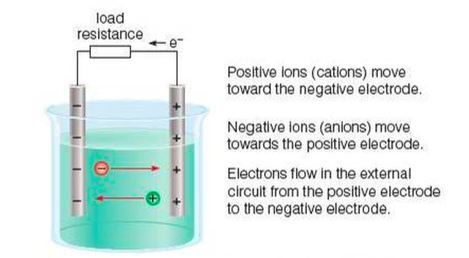
⇒ Both of the ions in the solution contribute to the current, which can be measured externally by an ammeter connected in series with both electrodes
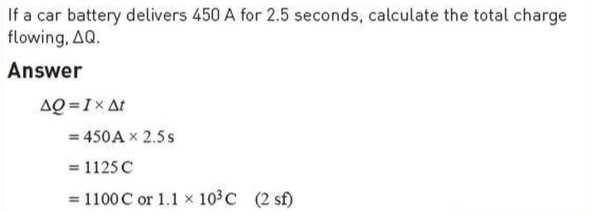
⇒ Tip: in the exam you are assessed on your understanding of the significant figures of the numbers that you use in calculations. In this example, both the pieces of data used in the calculations are to 2 significant figures (sf). As a general rule, you should state your answer to the same number of sf as the least significant piece of data used - 2 sf in this case
Variations of current with time
⇒ Below shows the variation of the current drawn from a cell wit time
⇒ The current is drawn for a total of 10 seconds, but 5s after switching on A, switch B is closed allowing current to travel through the second identical resistor

⇒ As ▵Q = I x ▵t the charge transferred during the first 5s is the area under the current-time graph from t = 0s to t = 5s
- During the second 5s, the current doubles
- The charge transferred during this time is the area under the graph from t = 5s to t = 10s
- The total charge ▵Q transferred during the whole period is the total area under the graph (i.e. the total charge transferred is the area under a current-time graph):


⇒ This graph shows the variation of current with time through part of the timing circuit for a set of traffic lights
- In this case, the current varies continuously with time - the total charge transferred is still the area under the current-time graph, which is calculated to be 3C in this case
⇒ In a similar way, the gradient of a charge-time graph (Q-t) is the current
- The following graph shows the current sparking off the top of a school van der Graaff generator
- The current, I, durring this discharge is determined by calculating the gradient of the Q-T graph as I = Q/t
